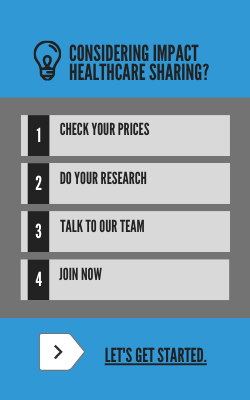.png?width=795&name=blog%20images%20(42).png)
American Heart Month is a tradition that was established over half a century ago. The first proclamation was issued by President Lyndon B. Johnson in February 1964, nine years after he had a heart attack. Since then, the president has annually designated February American Heart Month.
American Heart Month is an ideal time to remind us that it is essential to focus on healthy hearts and encourage others to do the same.
What is heart disease?
Heart disease refers to several different types of heart conditions. The most common in the United States is coronary artery disease, which affects the blood flow to the heart. When blood flow is decreased, it can cause a heart attack.
What are the symptoms of heart disease?
It is possible that heart disease may be “silent” and not diagnosed until a person experiences signs or symptoms of a heart attack, heart failure, or an arrhythmia. Symptoms may include the following:
- Heart attack: Chest pain or discomfort, upper back or neck pain, indigestion, heartburn, nausea or vomiting, extreme fatigue, upper body discomfort, dizziness, and shortness of breath.
- Arrhythmia: Fluttering feelings in the chest (palpitations).
- Heart failure: Shortness of breath, fatigue, or swelling of the feet, ankles, legs, abdomen, or neck veins.
What are the risk factors for heart disease?
High blood pressure, high blood cholesterol, and smoking are key risk factors for heart disease. Several other medical conditions and lifestyle choices can also put people at a higher risk, including:
- Diabetes
- Overweight and obesity
- Unhealthy diet
- Physical inactivity
- Excessive alcohol use
Heart attack symptoms:
- Chest discomfort. Most heart attacks involve discomfort in the center of the chest that lasts more than a few minutes or that goes away and comes back. It can feel like uncomfortable pressure, squeezing, fullness, or pain.
- Discomfort in other areas of the upper body.
- Symptoms can include pain or discomfort in one or both arms, the back, neck, jaw or stomach.
- Shortness of breath with or without chest discomfort.
- Other signs may include breaking out in a cold sweat, nausea, or lightheadedness.
Stroke symptoms:
- Face drooping. Does one side of the face droop or is it numb? Ask the person to smile.
- Arm weakness. Is one arm weak or numb? Ask the person to raise both arms. Does one arm drift downward?
- Speech difficulty. Is speech slurred? Are they unable to speak, or are they hard to understand? Ask the person to repeat a simple sentence, like "The sky is blue." Is the sentence repeated correctly?
- TIME TO CALL 9-1-1. If a person shows any of the above stroke symptoms, even if the symptoms go away, call 9-1-1 to get them to the hospital immediately.
.png?width=795&name=blog%20images%20(88).png)
High blood pressure symptoms:
- Severe headaches
- Nosebleed
- Fatigue or confusion
- Vision problems
- Chest pain
- Difficulty breathing
- Irregular heartbeat
- Blood in the urine
High blood pressure often has no symptoms at all. This common condition can go years undetected, and over time, can lead to heart problems such as heart disease. This is why it is crucial to schedule regular checkups. Don’t wait for a symptom to get a physical or annual exam.
Heart disease prevention
There are a number of things you can do to reduce your chances of getting heart disease.
- Control your blood pressure.
- Keep your cholesterol and triglyceride levels under control.
- Stay at a healthy weight.
- Eat a healthy diet.
- Get regular exercise.
- Limit alcohol.
- Don't smoke.
- Manage stress.
Stress can cause sleep loss, pain, and headaches, and can exhaust the body. Chronic stress can cause the heart to work harder. This will worsen any other risk factors for heart disease you may have. Take breaks and allow yourself to step away from things that trigger stress.
Eat a heart-healthy diet
A healthy diet can help protect your heart, improve your blood pressure and cholesterol, and reduce your risk of type 2 diabetes.
A heart-healthy eating plan includes:
- Vegetables and fruits
- Beans or other legumes
- Lean meats and fish
- Low-fat or fat-free dairy foods
- Whole grains
- Healthy fats, such as olive oil
It’s possible that you have already heard of the DASH eating plan. DASH stands for Dietary Approaches to Stop Hypertension.
This plan suggests that you limit the intake of the following:
- Salt
- Sugar
- Processed carbohydrates
- Alcohol
- Saturated fat (found in red meat and full-fat dairy products) and trans fat (found in fried fast food, chips, baked goods)
.png?width=795&name=blog%20images%20(41).png)
A lifestyle change can help to prevent heart disease. You should also work closely with your doctor and monitor your blood pressure on a regular basis. If you have some concerns, schedule an appointment to find out what the best course of action would be best for your needs.
Educate yourself and those you love, so you aren’t caught off guard with a medical emergency.
Want to help spread awareness? The CDC has pre-written posts and graphics for your social media channels. They have taken all the guesswork around what and how to inform others. To see their suggested posts visit the CDC website.
If your physician has asked you to keep track of your blood pressure readings, here’s a simple downloadable chart to help manage your information.
February 7th is National Wear Red Day®. Wear red on National Wear Red Day® to raise awareness among women about heart disease and stroke. To see more information specifically related to women and heart disease, check out the Go Red for Women website.


COMMENTS